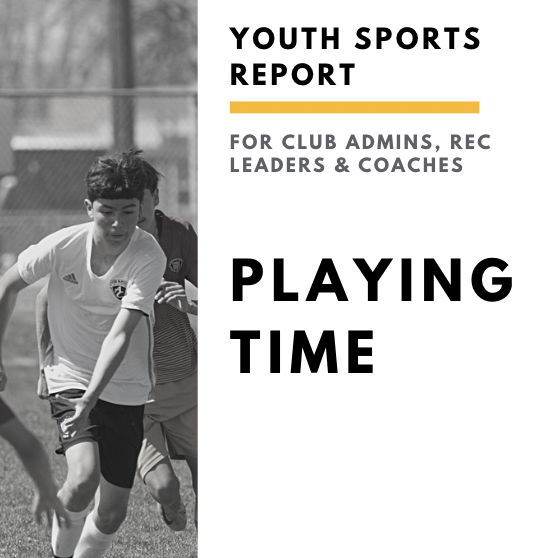Get our exclusive report. Download the iSport360 Club Switching Report Here – For Club Admins, Rec Leaders and Coaches.
Running the Score Up in Youth Sports
We have all been on one or both sides of these games. Whether you lose by 10 or win by 10, there are usually a lot of thoughts that went into the game and how to play it.
Coaches coach to win but that isn’t the only reason they coach. They love to develop athletes, they love to see athletes boost their confidence and rise to the next level. I truly believe that coaches do not walk into a game or match thinking that they are going to run up the score.
In youth sports, the desire to win can sometimes overshadow other important values, such as sportsmanship, fairness, and respect. One contentious issue that often comes up is the practice of “running up the score.” This is when a team continues to aggressively score points against an overmatched opponent, even though victory is all but assured.
While some argue that running up the score is simply part of the game, others view it as unsportsmanlike and detrimental to the spirit of youth sports. Let’s dive into the ethics of running up the score and explore how coaches, parents, and players can uphold values of fairness and respect in youth sports.
Understanding the Phenomenon of Running Up the Score
The term running up the score may confuse parents players, and even other coaches. We wanted to take a deeper look at why it happens and what coaches may be thinking.
Running up the score occurs when a team continues to aggressively score points against an opponent, even when the outcome of the game is no longer in doubt. This can involve tactics such as leaving starters in the game longer than necessary, executing high-risk plays, or running up the score intentionally to inflate margins of victory.
The Arguments For and Against
Arguments For Running Up the Score
Competitive Advantage
Some argue that running up the score is simply a reflection of a team’s superior skill and competitiveness. In highly competitive leagues, maintaining a high-scoring offense can be advantageous for playoff seeding and overall team morale.
Teams are sometimes awarded based on goal differential to win the tournament, pool play, or league play. The purpose is to win and to win, you sometimes have the score a certain amount of goals to ensure you come in first.
Preparation for Adversity
Proponents of running up the score argue that facing adversity, even in the form of a lopsided score, can be a valuable learning experience for young athletes. Learning to compete and persevere in challenging situations can build character and resilience. As a coach on the losing side of a lopsided game, my reaction is always “You can’t control what the other team does, but you can control how you react”. This is a great lesson in life.
Lopsided Pairing
In some cases, there are two teams that meet in a game that really shouldn’t. If a stronger team plays a very weak team, it isn’t great for the development of either team to be in a match like that. That being said, some of this is not in the control of the coaches.
As a coach, I like to sub out the starters and put in the bench players. This gives those players a chance to play and get experience. However, these players want to impress the coach so badly that they score. You can’t ask them not to score. Also, I have asked my starters to pass around the ball, transfer in the backfield, and have 3 passes before they shoot. I have been told by other coaches to just play the game and not play keep away.
Arguments Against Running Up the Score
Sportsmanship
Running up the score is often seen as a violation of sportsmanship and fair play. It can be demoralizing and disrespectful to the losing team, as well as damaging to the integrity of the game. Coaches need to better prepare their teams and not blame the other team. Focus on what you can control.
Developmental Impact
For youth athletes, particularly those on the losing end of a blowout, the experience of being on the receiving end of a lopsided score can be discouraging and detrimental to their development and enjoyment of the sport. It is good to mix it up and make sure your team plays other like teams so they can see that what they are practicing is working.
Promoting Sportsmanship and Fair Play
1. Coach’s Role:
Coaches play a crucial role in setting the tone for sportsmanship and fair play within their teams. Coaches need to instill values of respect, humility, and empathy in their players, emphasizing the importance of treating opponents with dignity and respect, regardless of the score. Even with a dominating win, coaches need to set a good example and make sure the players know why and how they are managing a game like that.
2. Player’s Role:
Players should be encouraged to compete with integrity and respect for the game and their opponents. Emphasize the importance of playing hard, playing fair, and showing respect for teammates, coaches, officials, and opponents alike.
When it comes to leaving starters in, I can say from experience that it is easier to control how starters behave, specifically just passing the ball around and not scoring. As a coach who has been in this situation, I have asked my starters to practice transferring the ball in the backfield vs scoring. And they listen to their coach.
When non-starters get in a game, they want to score. And I can’t blame them, it is their chance to prove themselves. It is a fine balance between giving everyone time and trying to manage the balance of playing.
3. Parent’s Role:
Parents can support their children’s development as athletes and individuals by modeling sportsmanship and respect in their behavior. Encourage your child to compete with integrity, humility, and empathy, reinforcing the importance of treating opponents with respect, regardless of the game’s outcome. Regardless of the outcome of a game or the score, ask your athlete, “Did you give 100% effort and have a good attitude?”. These are two things that we can control.
Alternatives to Running Up the Score
Instead of running up the score, coaches can use lopsided games as opportunities to focus on skill development, sportsmanship, and teamwork. Consider strategies such as rotating players, experimenting with different lineups or formations, and emphasizing sportsmanship and fair play over winning at all costs. These ideas are important because you can give players time that may not play as much.
Wrap Up
In the world of youth sports, the practice of running up the score remains a contentious issue, with proponents and opponents offering valid arguments from both sides. While competitiveness is an inherent aspect of sports, it should not come at the expense of sportsmanship, fairness, and respect.
Coaches, parents, and players all have a role to play in promoting values of integrity, humility, and empathy, and upholding the spirit of fair play in youth sports. By fostering a culture of sportsmanship and respect, we can ensure that all athletes, regardless of skill level or competitive success, can enjoy the benefits of participation in sports while learning important life lessons that extend far beyond the playing field.
iSport360 is the only app that does it all for youth sports. For more information on what we do, click here.
About the author:
Amy Masters is a sports mom, coach, and club administrator. She has been coaching youth sports for more than 10 years. She started Jr Lions Field Hockey, the youth recreation program for the Hunterdon County community growing it from 40 players in year 1 to 150 players by year 3. A few years later, she saw the love and competitiveness grow then started Omega Field Hockey Club serving NJ and PA players. Before coaching, she was a collegiate field hockey player for Lock Haven University. In her spare time (lol), she is head of marketing for iSport360 and the co-editor of the Youth Sports Survival Guide. The Youth Sports Survival Guide is the largest youth sports newsletter in the world.
Learn more or request a demo of our youth sports software that is helping teams improve communication, organization and player development.
February 20, 2024






